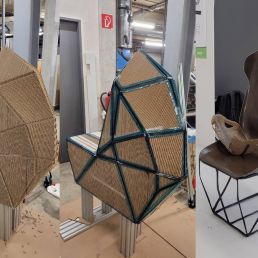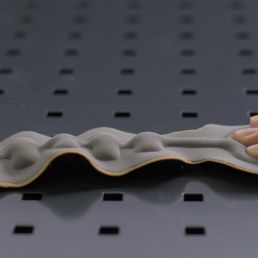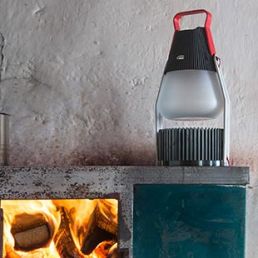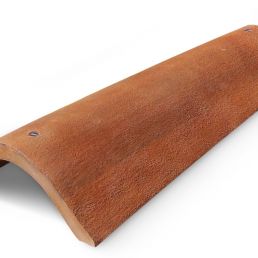Extraordinary Timber
Wood products with innovative qualities
form 238
May/June 2011
publisher
Birkhäuser (Basel)

Employing special material qualities to improve air quality is one of the most important goals of current materials research. By integrating zeoliths into the filling material of chipboard and plywood panels, scientists at the Fraunhofer Institute for Wood Research have succeeded in cutting formaldehyde (a potentially toxic component of artificial resin) emissions by 40 percent. The large, porous surface of alumosilicates acts like a filter and absorbs the harmful substances from the material.
The fact that wood can actually be optimized using simple means is likewise demonstrated by the Müritzeum, the Nature Discovery Center on Müritzsee outside Berlin. Its facade is made entirely of carbonized timber. The result is a robust surface resistant to buckling and mildew. The wood of the coconut shell has similar qualities. Which is why manufacturers such as Decor Pietra also tend to use it for rooms prone to moisture, for example as a decorative and environmentally-friendly mosaic in showers and bathrooms. Aside from such natural potential, several manufacturers are now also presenting unusual processing techniques to lend timber totally new properties. For example, Liqmet recently launched a metal coating you can apply using a paint brush to give wooden flooring a shiny, metal look.
The use of bamboo in building has a long tradition in Asia. As it is fast growing, it is constantly available. Thanks to its special tensile strength, bamboo is now increasingly finding use in architecture in the West. In the past, the joints between the individual bamboo canes and the points it comes into contact with other materials were seen as problematic for the stability in building. Civil engineers at Darmstadt Technical University have now succeeded in substantially enhancing load-bearing capacity using an innovative combination of bamboo, concrete and steel. The cane ends are filled with a concrete mix containing a high proportion of flue ash. This ensures the concrete settles close to the bamboo cane’s interior walls.
www.wki.fraunhofer.de
www.isc.fraunhofer.de
www.mueritzeum.de
www.decor-pietra.de
www.liqmet.de
www.tu-darmstadt.de
image source: Müritzeum
Ecoblaq molecular wood colours
23 March 2024
Ecoblaq is a molecule manipulation method, a natural chemical reaction, making…
Natural fiber reinforced car seat
22 October 2023
The focus of the project "Design for Recycling" is a seat shell that is made…
MotorSkins morphing textiles
19 April 2022
Berlin based start-up MotorSkins designs and produces textiles with embedded…
3D Pioneers Challenge 2022
15 December 2021
The 3D Pioneers Challenge 2022 adresses tech pioneers who pave the way for…
IGNIS – Light from waste heat energy
12 August 2020
The availability of affordable, independent and, above all, clean electrical…
Brake disc with reduced fine dust
21 April 2021
Fine dust endangers our health. One of the main sources is traffic, especially…
Texoversum
15 July 2023
With the "Texoversum", Reutlingen University has put into operation a training…
Invisible Terracotta Solar Rooftile
10 May 2023
The family-run business Dyaqua has developed a technology to integrate a…
Xarvio – Digital Farming
8 January 2021
BASF Digital Farming GmbH has received the renowned Crop Science Award for the…








